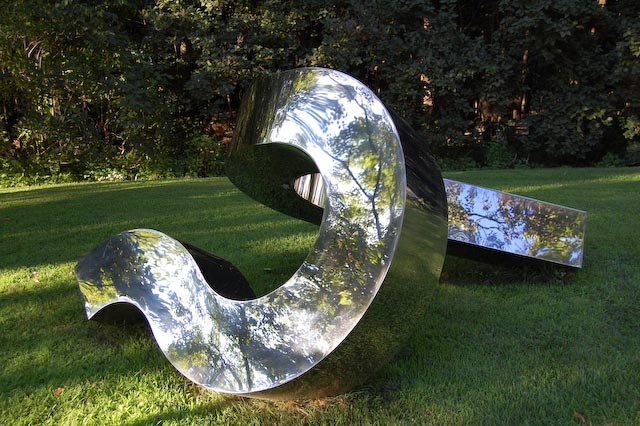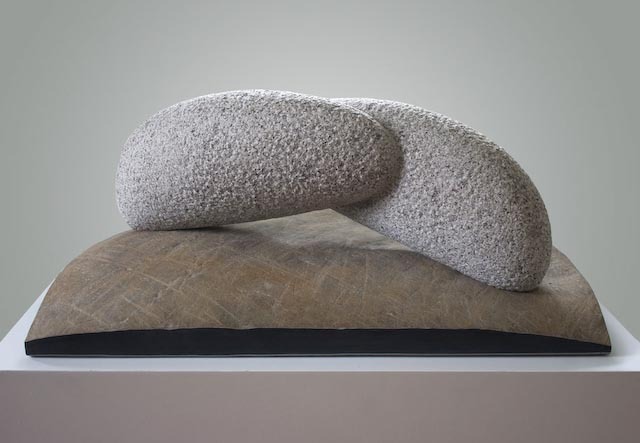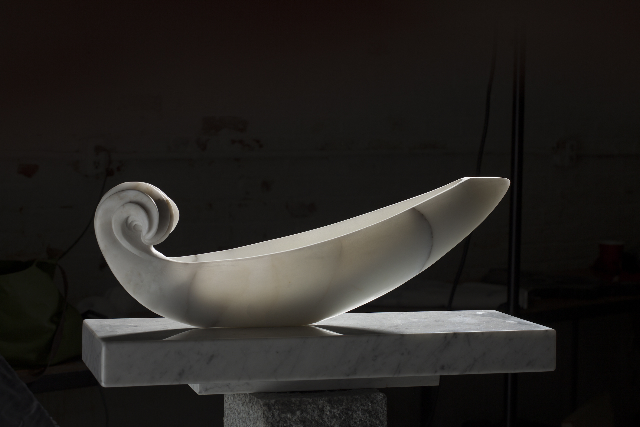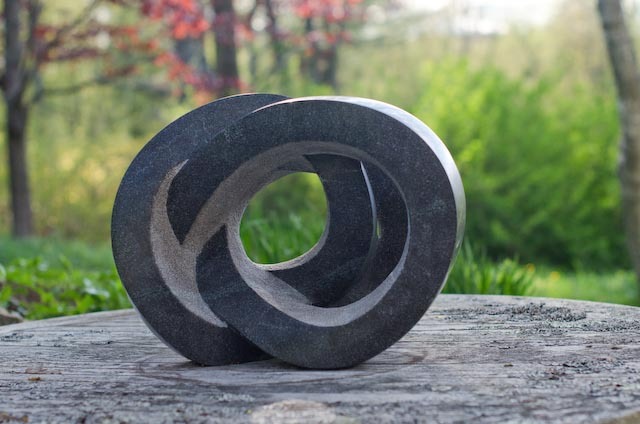Maybe I spill far too much ink and too many tears lamenting the state of sculpture in America, and Maine in particular.
But maybe not.
While I think we as a culture have lost our sense of composition in the round, there is still excellent sculpture in Maine — like at June LaCombe’s Hawk Ridge Farm, where you can see works by scores of active regional sculptors.
It’s a great way to see art. I like white-box galleries, but much sculpture, particularly outdoor sculpture, was made to interact with, instead of ignore, its surroundings.
So, to have the light shift by means of clouds, sun and weather while the summer breeze waves the timothy and lupine all around a large, granite sculpture by Gary Haven Smith is something I could see a lot more often.
LaCombe gets the best of Maine sculpture, and, as a setting, Hawk Ridge is idyllic. Yet it also just makes sense.
LaCombe’s house and grounds might seem a bit extravagant, but the spaces range from meandering fields to the intimately compressed nooks found around virtually all Maine houses. In fact, her presentation is a lesson in outdoor sculptural possibilities fitting for the naturalistic and relaxed sensibilities so pervasive in Maine.
LaCombe is open primarily by appointment, but she is a welcoming host, and most of the work is outdoors on the grounds. Anyone who isn’t comfortable calling for an appointment should attend one or more of LaCombe’s “Sunday Afternoon Maple Tree Talks” that are open to the public and feature sculptors such as Michael Shaughnessy, one of the best contemporary artists in Maine.
There are 115 works in the show, in addition to LaCombe’s own (and copious) collection.
This year’s standout is a sculptor who deserves to be a household name: Stephen Porter. He has the ability, ambition, production, resum?nd vision of a great artist.
While so many Maine sculptors rightfully indulge in our local granite, Porter prefers polished stainless steel. Still, his relatively small granite ellipse — a gorgeously tight form with an off-center circular hole — proves that he is a master with stone as well as steel.
Moreover, he handles smaller scales better in wood, so it’s perfectly fitting that his woodworks reside inside while his polished steel graces the grounds.
Porter evokes David Smith with his use of cubes, and at times, he even (respectfully) outpaces the late master. Similarly, Porter uses polished steel to brilliantly highlight the landscape as a place of light and vision. Instead of asserting themselves as exquisite objects, Porter’s larger steel works announce a sense of place along with themselves.
While I like his obelisk-oriented pieces, his “Southern Bend II” is the standout masterwork of form, volume, negative space and local light. Moreover, largely hidden in an intimate tree-surrounded clearing, it creates an incredible sense of place: Quiet, but important and unabashedly handsome.
My favorite Maine sculptors are two women who are still developing languages of their own, Constance Rush and Kazumi Hoshino.
Rush is represented by a pair of extraordinary fiddle-head-backed boats, including a mystically bold and spare vessel in translucent carrera marble. It occupies the interior gallery’s central coffee table like Charon’s ferry, a sentry of otherworldly gates.
I have seen stronger works by Hoshino, but her granite and basalt “Form of Memory” is nonetheless smartly compelling. It leans a bit heavily on Noguchi, although not as much as her husband Jesse Salisbury’s giant basalt, “Night Journey,” poised at the peak of the garden’s hilltop. (An important Maine artist, Salisbury is at his best when he gets very big and very loose with Maine granite.)
The strongest artists are too many to list, let alone discuss, but the works that intrigued me most include Wendy Klemperer’s witty rebar animals, Lise Becu’s organically charming chickens in the yard, Jordan Smith’s overflowing Noguchi-esque fountain, Robert Lash’s vertical “Herbie” elm charger, Pat Campbell’s reed and rice paper kite-like wall pieces and George Sherwood’s wispy-kinetic and jewelry-hammered stainless “5 gyres in C.”
Notable and new (to me) is Miles Chapin, whose savvy 3D design sensibilities show real promise and talent.
While the works at Hawk Ridge Farm are impressive and appealing, they make me long for more strong sculpture. But then again, that’s what good art tends to do.
Freelance writer Daniel Kany is an art historian who lives in Cumberland. He can be contacted at:
dankany@gmail.com
Send questions/comments to the editors.






Success. Please wait for the page to reload. If the page does not reload within 5 seconds, please refresh the page.
Enter your email and password to access comments.
Hi, to comment on stories you must . This profile is in addition to your subscription and website login.
Already have a commenting profile? .
Invalid username/password.
Please check your email to confirm and complete your registration.
Only subscribers are eligible to post comments. Please subscribe or login first for digital access. Here’s why.
Use the form below to reset your password. When you've submitted your account email, we will send an email with a reset code.